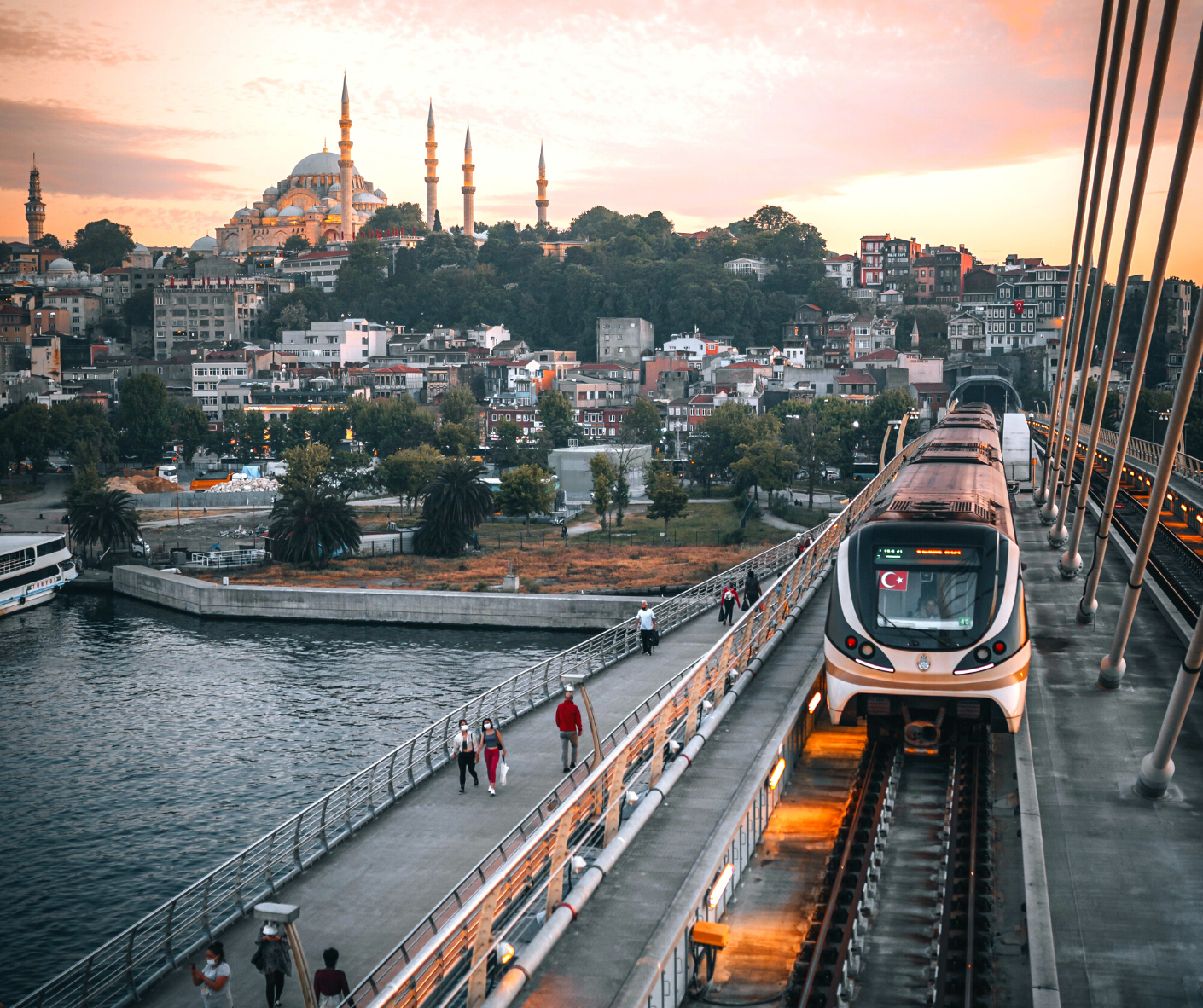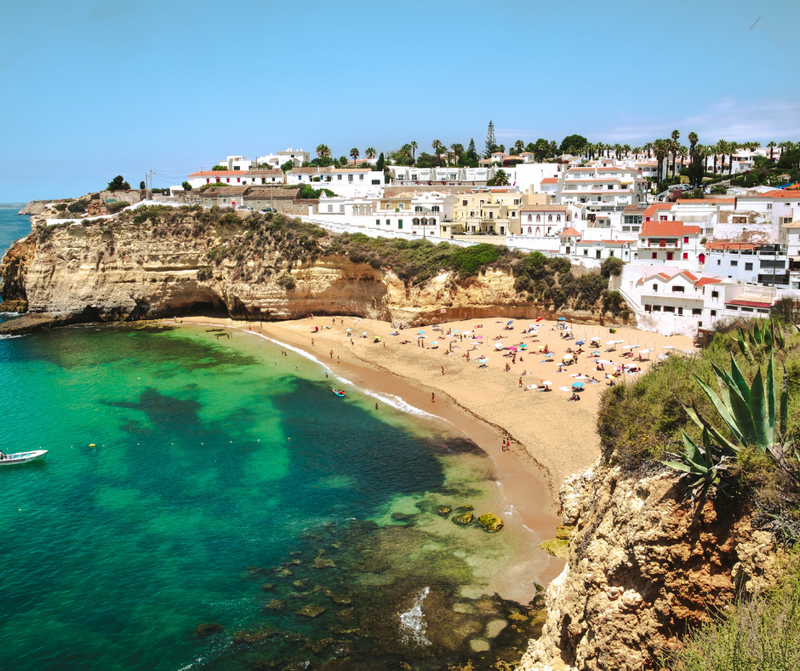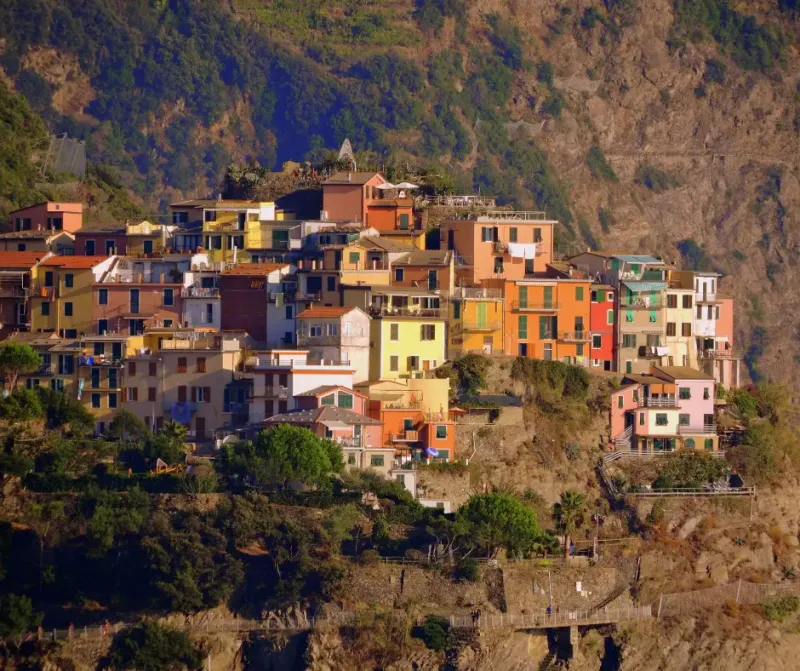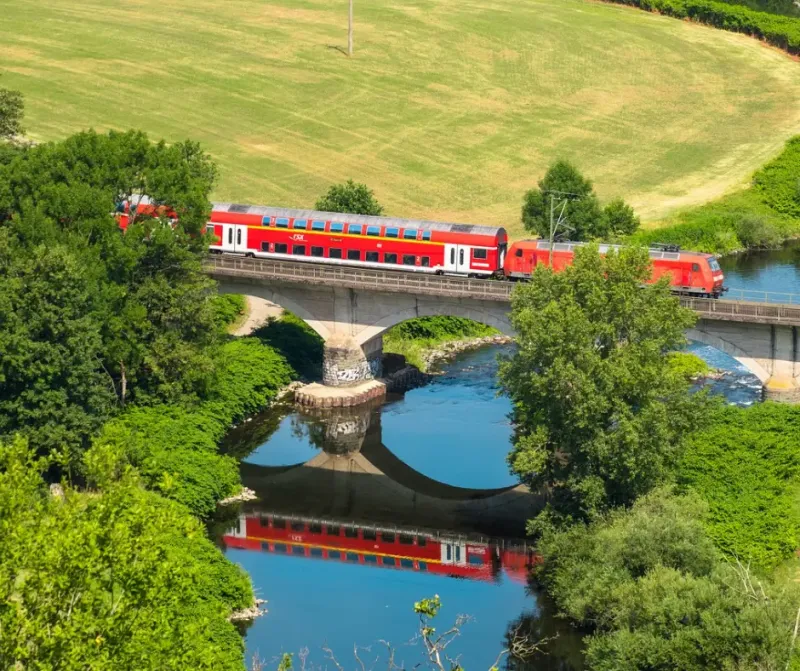Barcelona - Valencia - Madrid - Sevilla - Algarve - Lisbon - Porto
This travel itinerary idea is suitable for slow-traveling nomads who are not afraid of using public transport, waiting at train stations, and enjoying the change of scenery from a train window.
Destinations such as Barcelona, Lisbon, or Porto might be suitable to extend if city life excites you. Otherwise, smaller places like Valencia, Lagos, or Coimbra can be extended if you like to be in towns with a slower pace of life.
🌱 Travel health insurance for Europe
Traveling Spain by train
Barcelona
- In a nutshell: Together with Lisbon, Barcelona is on the radar of nomads for a long time now. The popular season is between spring and autumn. Barcelona has an excellent coffee and food scene, lively neighborhoods, sightseeing, and close proximity to the beach.
- Start: Barcelona's international airport is internationally well connected and a great starting point for this trip. When arriving at the international airport of Barcelona, you can take Aerobus 1 (terminal 1) or Aerobus 2 (terminal 2) to the city center. The cost is 5.90 Euro and it takes between 40 and 60 minutes to Place de Catalunya, depending on traffic.
- How to get around: Arrived at Place de Catalunya, you can take several subways to the Gràcia district, the subway departs every 4 minutes, and the ride takes about 5 minutes. When staying in El Born, walk 300 m from Place de Catalunya to Urquinaona station and take subway 4 to Jaume 1, which is only 1 stop. From there it is just a 5 minutes walk into the heart of the El Borne district. You can use Uber in Barcelona, but you will get an official Uber taxi (no private Uber drivers in Barcelona).
- Where to stay: Gràcia, and El Born. Listings here. If you prefer to stay with other nomads and you plan to stay at least 1 month, try Hivegeist.
- Where to work: Coworking space El Pati en la vila in Gràcia, and Espai Born in El Born.
- Laptop-friendly cafés: Sabio Infante in Gràcia, and Lulus in El Born.
- Where to find community: Meetup.com, Barcelona Digital Nomads.
- Events in Barcelona: Check this list for festivals, concerts, and street fests.
- Train to Valencia: Take the subway or an Uber to Barcelona-Sants train station and take the train to Valencia Joaquin Sorolla (2:40 hours). Tickets for Renfe train cost between 27 and 90 Euro. Last-minute tickets are more expensive than tickets booked a few weeks in advance.
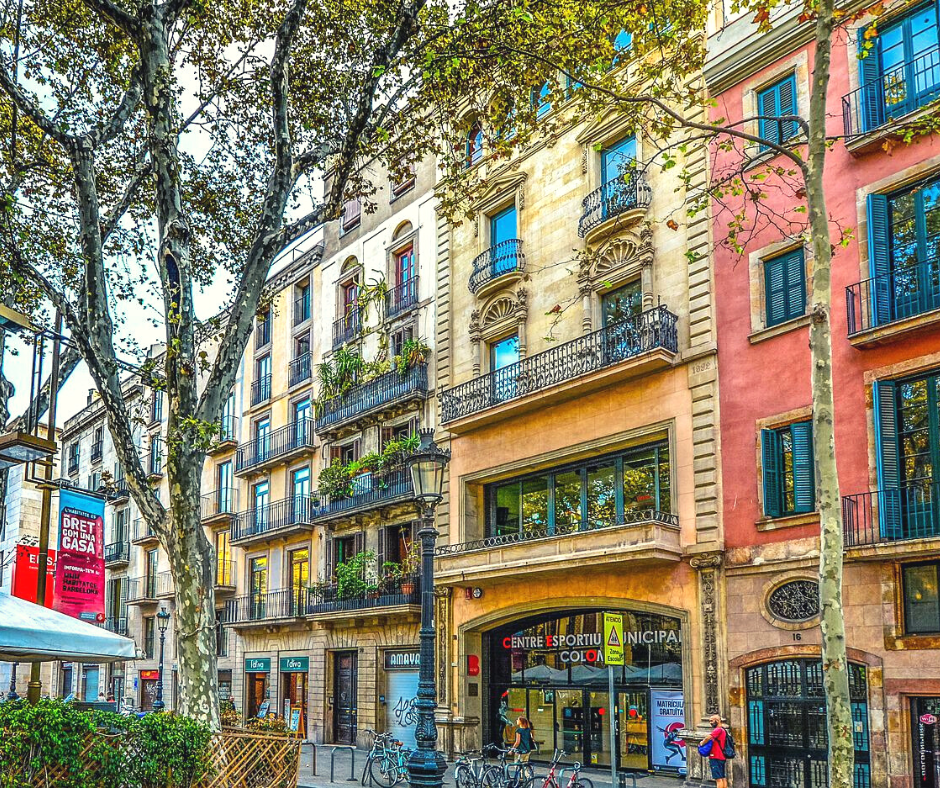
Valencia
- In a nutshell: As Spain's third-biggest city and an 84%-workforce based in the service industry, Valencia is one of the country's major holiday destinations. Located at the sea, Valencia is a beautiful place to visit and offers many cultural activities.
- How to get around: From Valencia's central train station, the Estacio del Norte, you can take the metro 5 to Algirós: Take metro 5 from Xàtiva (train station) to Ayora in the Algirós neighborhood. When staying in the Ruzafa district, you can easily walk from the train station or take a quick Uber to your accommodation. The Ciutat Vella district is a 10-minute walk from the train station or a quick Uber ride. Uber and Lyft are both available in Valencia. You can also rent a bicycle in Valencia in one of the many bike rental shops in town (8-12 Euro per 24 hours).
- Where to stay: Algirós (student neighborhood), Ruzafa (trendy), or Ciutat Vella (city center).
- Where to work from: Cowork Ruzafa in Ruzafa, or Garage Coworking in the center.
- Laptop-friendly cafés: ArtsySana and Bluebell Coffee Roasters in Ruzafa. List of 50+ laptop-friendly coffee shops in Valencia here.
- Where to find community: Valencia Digital Nomads (around 4,000 members)
- Train to Madrid: The train from Valencia Joaquin Sorolla train station to Madrid Puerta de Atocha train station takes about 1:40 hours, and tickets cost between 27 and 80 Euro, depending on the weekday, and time of the day.
Madrid
- In a nutshell: Spain's capital is the cultural, political, and technological hub of Spain. Great public transport, delicious food presented in excellent restaurants and in food markets, parks, sights, and an overall lively and exciting European Metropole.
- How to get around: From Madrid Puerta de Atocha train station you can take the public transport system to your accommodation. When staying in Chamberí, which is about 5 km away from the train station, you can walk 600 meters to Palos de la Frontera station, take metro 3, and get off at Moncloa station in Chamberí. When staying in the north of Madrid, in Chamartín, take metro C2 or C4 to Chamartín. From Puerta de Atocha train station to the Puerta de Atocha metro station, you need to walk 700 meters. The closest recommended neighborhood to the train station is Retiro. You can take the metro C2 from Puerta de Atocha to Plaza Niño Jesus in Retiro which takes about 8 minutes. Alternatively, you can use Uber to travel through the city or sign up for a city bike.
- Where to stay: Chamberí, Chamartín, and Retiro.
- Where to work from: The Shed in Salamanca, Modo Coworking SOHO in Retiro, and the MUN Coworking near Retiro.
- Laptop-friendly cafés: 50+ laptop-friendly coffee shops here.
- Where to find community: Meetup.com, Digital Nomads Spain.
- Train to Seville: From Madrid Puerta de Atocha train station, take the train to Seville Santa-Justa train station. The ride takes about 2:40 hours, and tickets cost between 40 and 100 Euro.
Note: There is no direct train from Valencia to Málaga, or from Valencia to Seville. All railway connections go through Madrid. Madrid is a good end if you need an international airport to exit Spain. Otherwise, continue to Seville.
Seville
- In a nutshell: A bit off the radar, Seville comes with a beautifully restored historic quarter, a great student, bar, and restaurant scene, and plenty of sightseeing. It is a walkable city with great public transport.
- How to get around: From Seville Santa-Justa train station, you can take the bus to Alfalfa, for example, take bus 32 from José Laguillo bus stop at Santa-Justa station to the Ponce de León bus stop in Alfalfa. When staying in Macarena, take the bus from the José Laguillo bus stop to the Parlamento de Andalucia bus stop in Macarena. Seville has a great bus network, and usually, Google Maps gives very good information. Alternatively, you can also take an Uber or Lyft.
- Where to stay: Alfalfa, and Macarena.
- Where to work from: Arcadia Coworking, Inmobalia Zona Macarena, and La Burbuja Honei Coworking.
- Laptop-friendly cafés: Check out this list here.
- Where to find community: The nationwide Facebook group Digital Nomads Spain includes people who are in Seville or might arrive during your stay.
- Train to Málaga: From Seville, you can take the train via Cordoba to the coastal town of Málaga and end the trip there.
- Train to Portugal: Take the train from Seville Santa-Justa train station to Huelva (1.5 hours) and stay overnight in Huelva if you arrive too late. From Huelva take the bus to the Spanish border town of Ayamonte (1 hour). From the bus terminal, take a taxi for 1.5 km to the pier and take the ferry over the Guadiana river (45 min) which is the natural border between Spain and Portugal. You will be rewarded by winning one hour as you cross a time zone. From the pier on the Portuguese side in the town of Vila Real de Santo António, you take a taxi to the train station (1 km) and take the train to Faro (1 hour). Huelva to Faro can be managed in one-half day. From Faro Train Station, you can walk (15 min) to the Alameda Hotel, or you take a taxi or Uber.
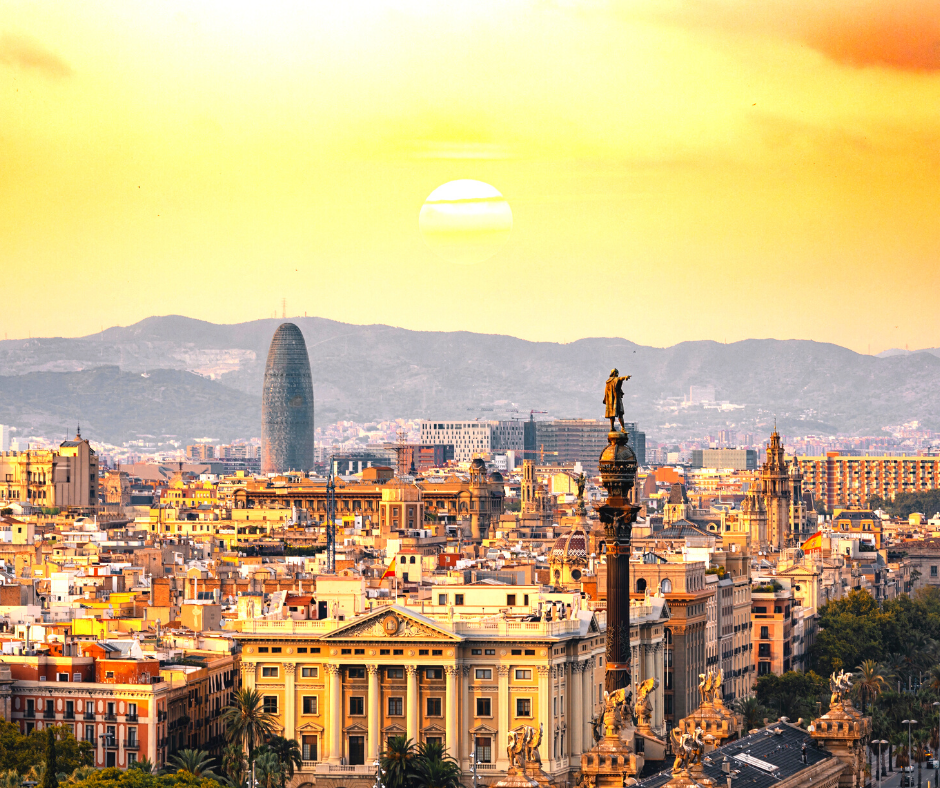
Traveling Portugal by train
Faro
- In a nutshell: Small beach town with an airport and train station. The town is walkable and comes with a handful of nice restaurants and some good cafés. Nothing of great variety or professionalism, but it is also a fairly small place.
- Starting point: When coming from Spain overland, Faro is the first coastal town in the Algarve to stop by train, and worth spending a few nights. You can also access Faro via plane from Lisbon. When arriving at the train station, you can literally walk 12 minutes to the Alameda Hotel. It is recommendable to stay close to the center as Faro is fairly walkable.
- How to get around: You can get Bolt and Lyft in Faro, or rent a bicycle.
- Where to stay: Alameda Hotel
- Where to work from: Kitchen / common area at the Alameda Hotel or Faro Avenida coworking space.
- Laptop-friendly cafés: Starbucks (sorry). Baixa Caffe is only recommendable if a lively environment doesn't bother you. It can get really busy during brunch time.
- Where to find community: Have a look at the Facebook group Digital Nomads Algarve, and Digital Nomads Portugal with more than 14,000 members.
- Train to Lagos: From Faro, you can take the train to Lagos, which takes 1:45 hours and costs about 5-8 Euro. If you want to explore the Algarve between Faro and Lagos, check out Olhao, Loule, and Albufeira along the way. Recommended hotels: Pure Formosa Concept Hotel in Olhao, aleixomor'Aqui in Loule, and The Homeboat Company - a houseboat stay in the marina of Albufeira! All towns are connected by train except Loule which you can reach by bus.
Lagos
- In a nutshell: The digital nomad hub in the Algarve, gets busy, popular, and expensive during July and August. Great beaches, walkable. Stay 2 weeks.
- How to get around: The train station in Lagos is next to the marina, and it takes about 20 minutes to walk to the city center. Uber, Bolt, and Lyft are available. In general, Lagos is very walkable once you have dropped off your luggage. You can walk easily from the upper neighborhoods of Vilas de Dinis to the city center in 15 minutes.
- Where to stay: the neighborhoods between the city center and the lighthouse, e.g. Vilas de Dinis.
- Where to work from: In one of the coworking spaces
- Laptop-friendly cafés: Black and White Coffee, Coffee and Waves, the Coffee Studio.
- Where to find community: Have a look at the Facebook group Lagos Digital Nomads - Algarve, Portugal, Digital Nomads Algarve, and Digital Nomads Portugal with more than 14,000 members.
- Train to Lisbon: From Lagos, you can take the train to Tunes and hop on another train to Lisbon. The journey takes 4 hours. You can buy tickets online, they cost around 30 Euro.
Lisbon
- In a nutshell: It is the digital nomad capital in Europe with thousands of nomads, meetups, coworking, and meetups. Expensive short-term destination. When traveling on a budget, invest time in researching good accommodation. Flats come often without AC.
- How to get around: Uber and Bolt are available in Lisbon. The capital provides a great public transport network, with metro, buses, and trams.
- Where to stay: Santos. Apartment listings here. If you prefer to stay with other nomads and you plan to stay at least 1 month, try Hivegeist.
- Where to work from: A second home coworking space, or Resvés Cowork Space
- Laptop-friendly cafés: Copenhagen Coffee Lap.
- Where to find community: Meetup.com with nearly 15k members.
- Train to Porto: From Lisbon, you can take the high-speed train Alfa Pendula, which connects Faro with Lisbon, Lisbon with Coimbra, and Coimbra with Porto. If you are looking for a laid-back, more affordable, and lively city you should check out Coimbra. Tickets from Lisbon to Porto are around 50 to 70 Euro and the journey takes 3 hours.
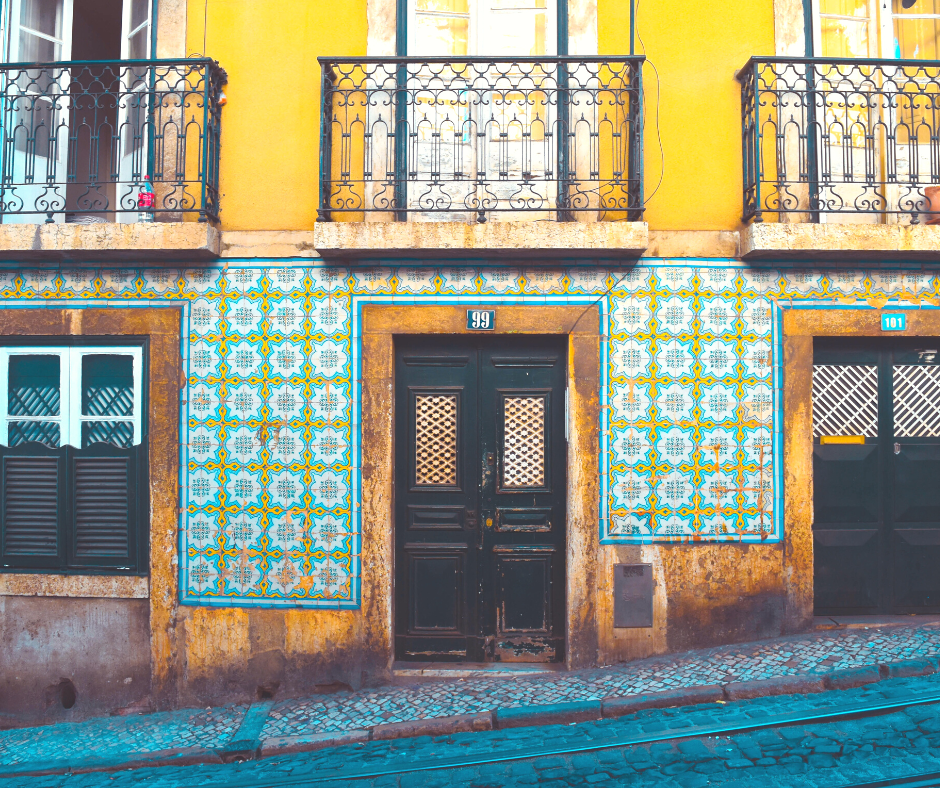
Porto
- In a nutshell: Porto is a vibrant town with a rising digital nomad community and international expat scene. Porto is walkable and you can easily spend 2-4 weeks there without getting bored.
- How to get around: Uber and Bolt are available in Porto.
- Where to stay: Boavista, Aliados, and Bolhao. Check out Flatio, and Rent Apartment Porto to find more affordable accommodation.
- Where to work from: Porto i/o coworking space downtown, or Porto i/o Riverside.
- Laptop-friendly cafés: C'alma Coffee Room, and Moustache.
- Where to find community: Check out these Facebook groups Digital Nomads Porto, and Porto Digital Nomads for meetups and events.
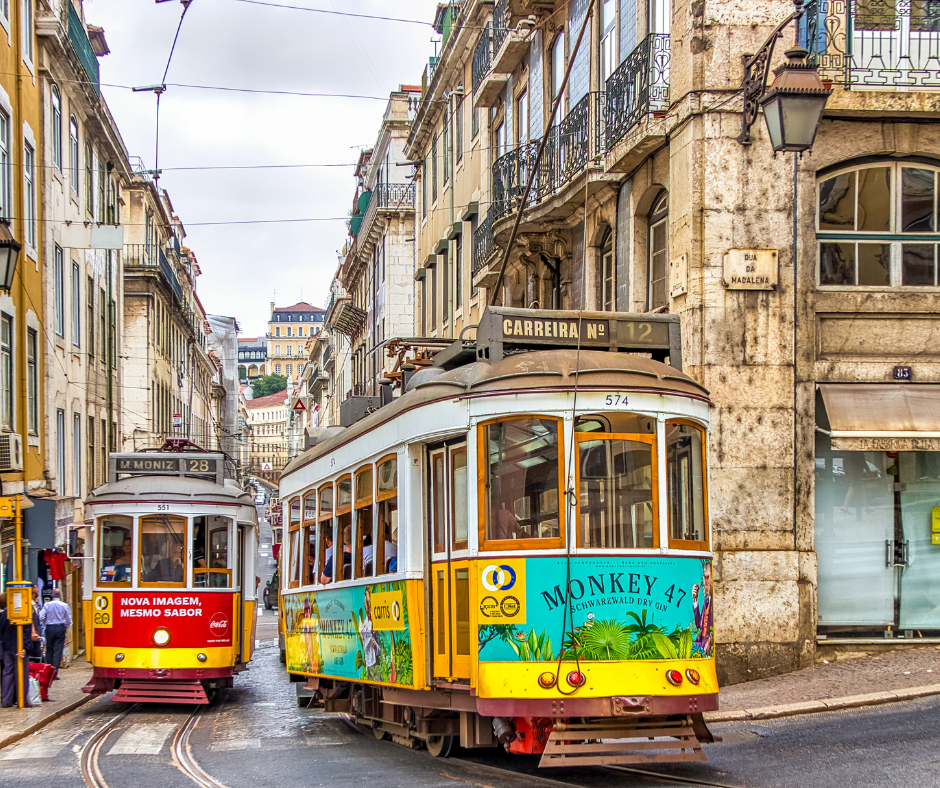
Estimated costs
Train tickets
Roughly 300 Euro from Barcelona to Porto including busses and the ferry connecting Spain and Portugal.
Accommodation
This varies greatly, depending on the type of accommodation, length of stay, and the research you do to find good deals. All mentioned places offer accommodation starting from 25 Euro per night without staying in dorms and hostels. When calculating a budget per night of 40 Euro, you will spend about 1,200 Euro for accommodation per month which is still an average monthly rent for Europe.
Restaurants
In general, I found Portugal more expensive than Spain. I try to eat fresh and healthy, meaning when I can't find a healthy local option, I seek vegan and vegetarian restaurants. Eating out can cost about 10 Euro including a bottle of sparkling water. That adds up to 300 Euro per month when eating out 1 meal every day. I usually do my own breakfast at home which consists mainly of fresh fruit, eggs, and a smoothie. Shopping grocery and preparing your own meals should reduce the cost.
Coworking spaces
Memberships of coworking spaces are a bit pricy. I try to find accommodation where I can work instead of spending money on coworking spaces. I try to find local meetups, events, or classes to get my social fix. Additionally, working from a coffee shop in the afternoon for a few hours can help as well. Daily rates in Spain and Portugal start at around 15 Euro, and monthly memberships can easily cost more than 200 Euro. When coworking is an essential part of your travel, try to find coliving spaces which include accommodation so you can save money by combining accommodation, and coworking.
Best season
There is no best season that fits all. For some, the best season for a destination is determined by weather, or the available holiday period, for example when taking a holiday as a family with kids in school. Others find their individual best season to be touristic off-season when places are less popular. However, I experienced that in the off-season, for example, in November and December, many hotels, restaurants, and coffee shops close for their own holidays.
Weather
Spain and Portugal both come with seasons. Winter months can be cold, especially when renting an apartment that will most likely come without central heating. Summer months, especially July and August can be really hot and apartments will most likely come without AC. That said, hotels mostly provide ACs. Mild and warm weather can be expected in spring (March to May) and autumn (September to November), which is also low-season for the Spanish coast and the Portuguese Algarve. When traveling to Spain and Portugal in summer during June, July, and August, keep in mind how important AC is for you and look for accommodation that provides temperature control.
Popularity
Many European countries, for example, France, have nationwide summer holidays. But also the 16 states of Germany choose their school holidays between June and August. And Germans love traveling to Spain and Portugal. You can expect many French, British, Dutch, and German tourists to populate the Spanish riviera, but especially the Algarve. Popularity drives prices up, and small places like Lagos face price jumps during the summer months. If you want to travel during July and August, start your accommodation research better sooner than later. Less popular months are September to March with a little rise during December but mostly in the bigger cities.
Costs
Expenses depend on demand and the demand is high in Europe's holiday seasons (July and August). If you are traveling on a tighter budget, try to either start in Portugal first to avoid being in the Algarve in July and August or push the travel to the end of the summer, starting in August in Spain and making your way south in the following months.
Traveler type
This itinerary is designed for the slow-traveling nomad with the heart of a traveler. Or for grown-up backpackers with flexible adult jobs and bigger budgets.
This train trip is for you if you travel light, preferably with carry-on luggage only. I did this train ride in November and December 2020 and enjoyed it a lot. The changes of being in popular places like Barcelona, Madrid, and Lisbon, paired with less famous destinations like Seville, Olhao, and Coimbra made a great mix. I recommend this trip if you can check the following points:
- Light luggage, carry-on luggage.
- Flexible working hours/days.
- Slow travelers enjoy changing scenery overland.
- Tolerance for delays, ad-hoc changes of travel plans, and waiting time.
- Don't mind walking (from the train station to accommodation). Although either Uber, Lyft, or Bolt, and traditional taxis are available in all mentioned destinations.


